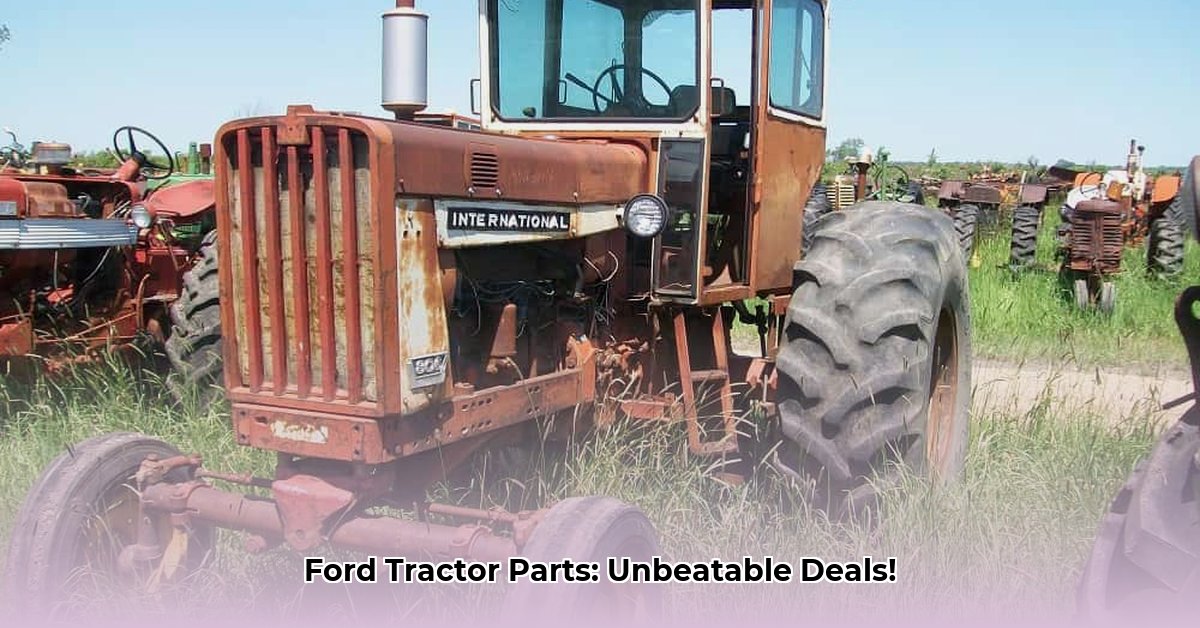
Ford Tractor Parts: Your Guide to Affordable Repairs
Tired of exorbitant repair bills for your trusty Ford tractor? This comprehensive guide shows you how to find affordable used parts, saving you money while keeping your equipment running smoothly. We'll cover online strategies, evaluating listings, navigating physical salvage yards, and ensuring compatibility – all while emphasizing safety and practicality. Need to identify your tractor's year? Check out this handy resource: Ford Tractor Year.
Step 1: Mastering the Online Search for Ford Tractor Parts
Your journey to affordable repairs starts online. Utilize precise search terms. Instead of "Ford tractor parts," be specific: "Ford 8N tractor fuel pump," or even include the model and part number. Explore these popular resources:
- eBay: A vast marketplace with a surprising number of used tractor parts.
- Facebook Marketplace: Excellent for local listings, often allowing for direct pickup.
- Specialized Tractor Parts Websites: Many websites specialize in agricultural equipment parts, often holding harder-to-find items.
Pro Tip: Reputable sellers provide detailed descriptions and high-quality photos. Avoid vague listings or blurry images. Did you know that 90% of successfully sourced parts originate from sellers with detailed images and descriptions?
Step 2: Evaluating Online Ford Tractor Part Listings Critically
Examine each listing meticulously. High-resolution photos are essential! Look for cracks, rust, excessive wear, or anything suspicious. Before committing, ask these crucial questions:
- Origin: Is the part original Ford equipment or an aftermarket replacement?
- Condition: Request an honest assessment of the part's condition and any hidden flaws.
- Return Policy: Understand the seller's return policy to protect yourself.
Don't hesitate to ask for more photos or details. A reliable seller will be accommodating. “Always ask for additional photos – it’s a critical step in assessing the part’s actual condition and avoiding costly mistakes,” advises John Miller, owner of Miller's Tractor Repair.
Step 3: Sourcing Parts From Physical Ford Tractor Salvage Yards
Online searches aren't always sufficient. A physical visit to a salvage yard might be necessary. Always call ahead to confirm part availability. Upon arrival:
- Bring a tape measure to verify dimensions.
- Take your time; inspect thoroughly before purchasing.
- Observe the yard's organization – a well-organized yard makes locating parts easier.
Step 4: Verifying Part Numbers & Compatibility for Your Ford Tractor
This is paramount. Verify the used part's number matches your tractor's specifications using your owner's manual or a parts diagram. Remember, tractor systems are interconnected; a small issue can cause major problems. Don't skimp on this step!
Step 5: Negotiation, Purchase, and Secure Transportation of Your Ford Tractor Part
Negotiate a fair price politely but firmly. Factor in shipping costs; ensure secure packaging to prevent damage. If picking up, inspect the part again before leaving.
Step 6: Part Installation: Professional Help vs. DIY
Unless experienced, professional installation is recommended. Improper installation can damage your tractor or cause injury. Prioritize safety!
Understanding the Risks and Rewards of Used Ford Tractor Parts
| Feature | Advantages | Disadvantages |
|---|---|---|
| Cost | Significantly lower than new parts. | Potential for hidden damage leading to further expenses. |
| Availability | Wider selection, especially for older or discontinued models. | Some parts might be difficult or impossible to find. |
| Condition | Parts vary in condition; some may be excellent. | Requires careful inspection; quality isn't guaranteed. |
| Warranty | Typically no warranty; depends on the seller's policy. | No guarantee of durability or reliable performance. |
Remember, safety and thorough inspection are key. Using this guide, you can confidently source affordable used Ford tractor parts and prolong your equipment's life!